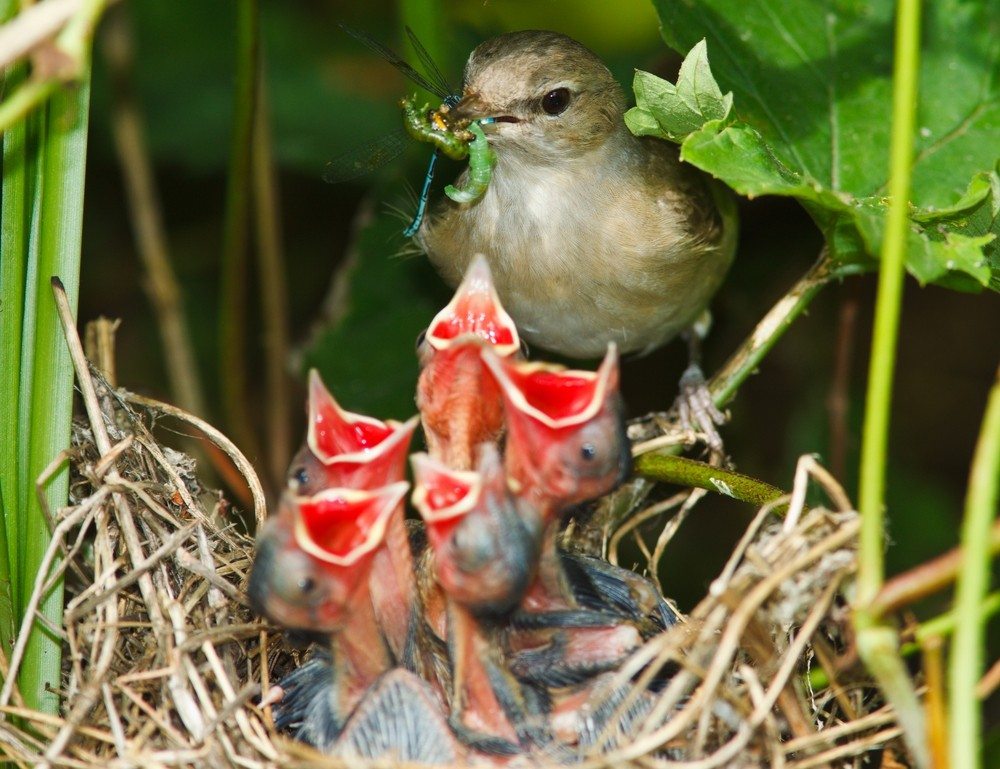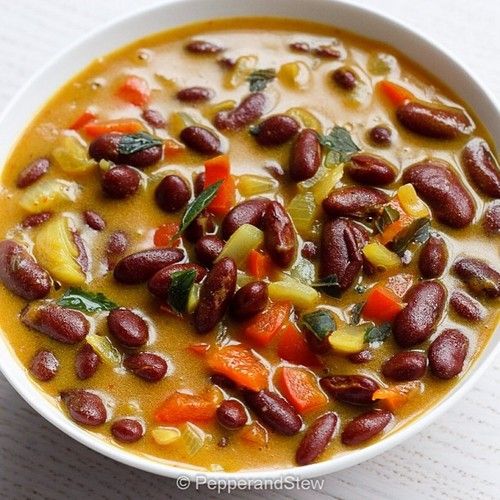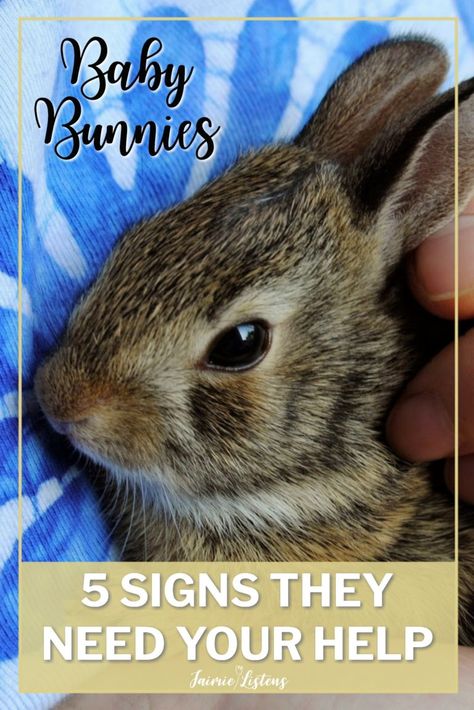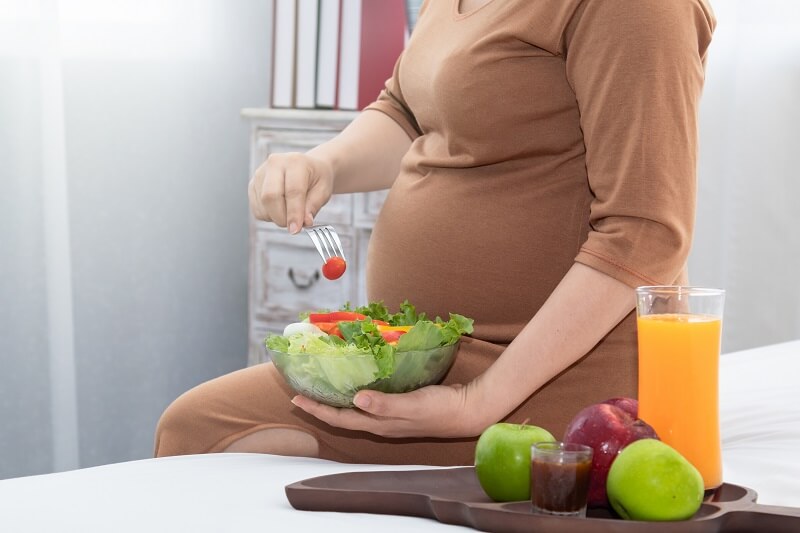Food for wild baby birds
This Is What To Feed Baby Birds — And How To Feed Them
If you’re wondering how to feed a baby bird, there are a few important things you need to know. Baby birds usually eat what their parents eat for dinner, since the parent has to burp its food into the mouth of its offspring. Birds cannot break down food at birth, so their parents must first partially digest the food to make it safe for chicks. Since baby birds are dependent on their parents not only for food but also for instructions on how to be a bird, it is essential that it stays with them. So, if you find a baby bird on the ground, try to bring it back to the nest rather than looking after it yourself. If you cannot return the bird to its nest, contact a rehabilitation center that can take care of it.
Contents
- Consult the experts if you think a baby bird isn’t being fed
- What to feed a baby bird
- What not to offer when feeding baby birds:
- DIY baby bird food
- How to feed a baby bird
Difficulty
Easy
Duration
15 minutes
What You Need
-
Dog or cat food, boiled eggs, or raw unseasoned liver
-
Small pieces of fruit or veggies
If you’re raising domestic birds or are licensed to take care of wild animals, however, then it’s important to know how and what to feed baby birds — and sometimes, even learn how to DIY baby bird food.
Consult the experts if you think a baby bird isn’t being fed
If you find a baby bird that does not seem to be fed, look for an hour or two to see if its parents provide food for it again. Note that the mother bird only needs a few seconds to feed its baby, so inattentive observers could miss several feeding cycles. However, if one parent bird has to look after several baby birds in different places, parental visits could be irregular. When the baby bird is fed, you can be sure that its parents have provided its needs, and there is no unnecessary intervention if the baby bird does not appear injured or sick.
Step 1: If the baby bird does not appear to be fed and becomes increasingly weak and lazy, the first step should be to find a licensed rehabilitator to provide, or guide you through, the appropriate care.
Step 2: If you have found a baby bird that needs to be fed but does not have contact with its parents or an animal rehabilitator, it is essential to know what a baby bird needs a portion of food similar to its natural diet.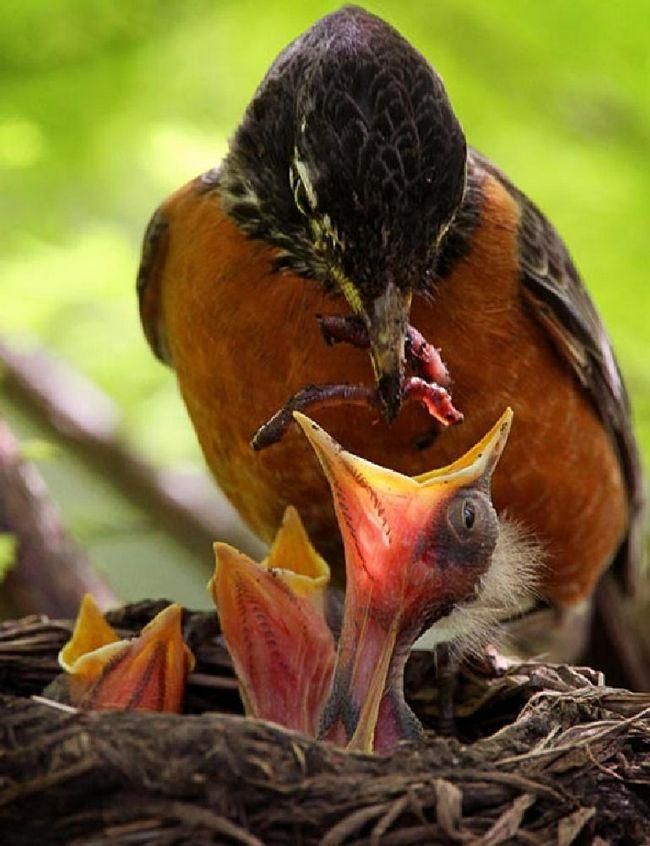 While each wild bird has its own diet, different types of food can serve as an emergency ration if necessary.
While each wild bird has its own diet, different types of food can serve as an emergency ration if necessary.
What to feed a baby bird
In nature, baby birds eat the same things that their parents eat: Worms, insects, and seeds. However, chicks can eat different types of food if they are taken care of by whoever found them. You could use puppy food soaked in water until it’s like a sponge. Moist dog or cat food can also be used in a jam when at room temperature. You can also use finely chopped fruits and vegetables (such as corn or peas) and even small insects.
It is equally essential to recognize that baby birds have very different nutritional needs than adult birds. What an adult bird eats can harm its young. As a baby bird grows, its diet can be adapted to more raw meat, giving them the protein that’s needed. As for water, a baby bird gets what it needs from the food it eats.
Food suitable for baby birds:
- Boiled eggs
- Moist dog food
- Wet cat food
- Raw liver (without seasoning)
What not to offer when feeding baby birds:
- Water
- Milk
- Bread and bakery products
- Kitchen waste
Unlike mammals, birds do not drink milk and their digestive systems won’t tolerate milk.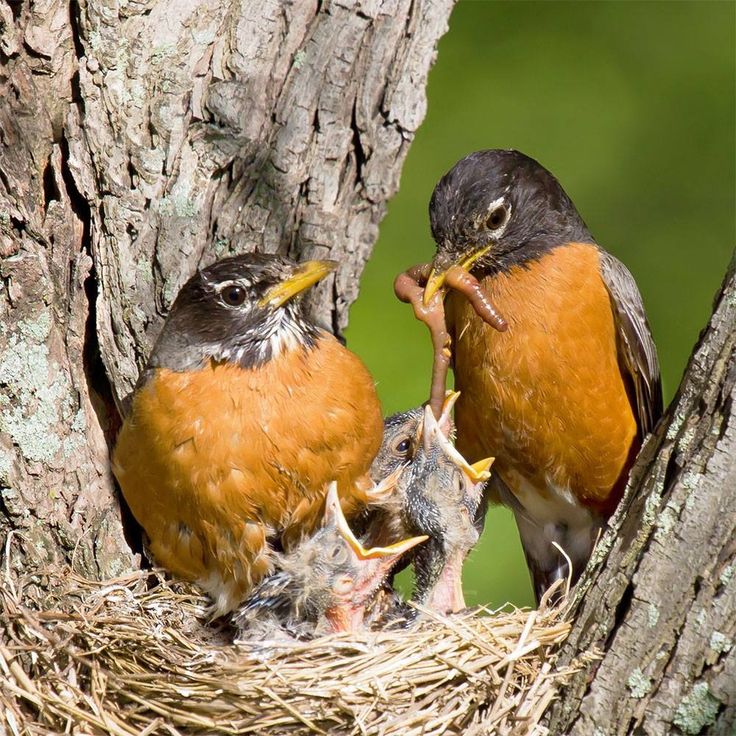 Unfortunately, it’s a common misconception that mixing together bread and milk makes for an ideal feed for baby birds. Milk can be toxic to birds, so avoid feeding it entirely.
Unfortunately, it’s a common misconception that mixing together bread and milk makes for an ideal feed for baby birds. Milk can be toxic to birds, so avoid feeding it entirely.
When a baby bird is older, it can consume ”adult” bird foods without harming itself and the longer it can stay between strokes.
Cathy Hargreaves/Shutterstock.comDIY baby bird food
One easy recipe for feeding baby birds involves just two ingredients: pet food and water.
- Soaking dog biscuits or kibble in water will create a mushy consistency that’s easy to take and digest for young birds. This mimics the texture of the food given by mama birds in the wild and is also a high-protein option, which is extra important for nestlings.
- A classic biscuit treat like Milk-Bone is ideal for recipes like these. To forgo the mixing and mashing, a canned pet food like the Cesar brand is another great option. You still might want to stir in a tiny bit of water if your bird is particularly young, though.

How to feed a baby bird
Step 1: If you need to feed a wild baby bird, remember to offer foods that have a spongy consistency instead of dripping with water, which can suffocate or drown it. All dry food should be softened before offering it.
Step 2: Food should only be offered at room temperature, never heated or refrigerated.
Step 3: Keep food pieces small and proportional to the size of the bird — tiny birds need tiny bites. Cut or crush food properly to fit the size of the bird.
Step 4: When feeding the bird, be as careful as possible to minimize the risk of additional stress or injury. Never force a bird to eat its food.
Lastly, remember that feeding a baby bird should be only an emergency measure. If one is abandoned and needs care, it should be taken by a bird-rescue organization or an experienced rehabilitator as soon as possible. They can not only feed baby birds with a diet suitable for its type, but they also teach it to live independently, avoid predators, and master other skills to live in nature successfully.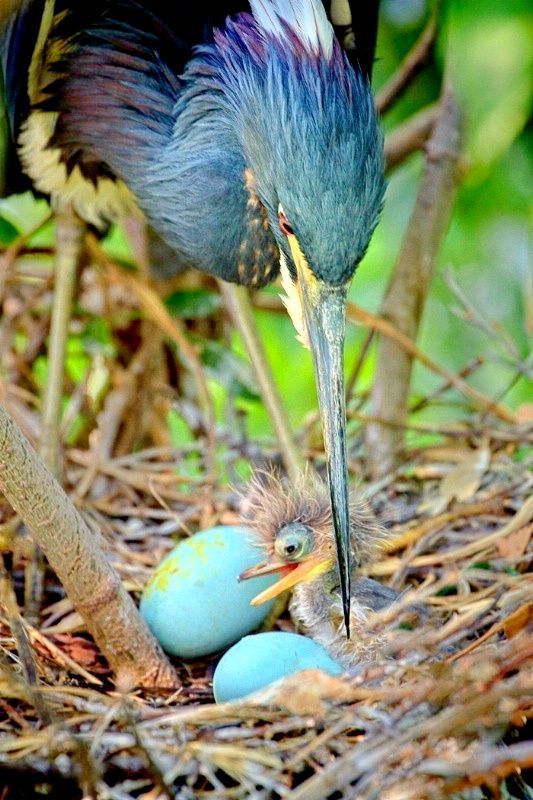
Editors' Recommendations
- Got a scared bird? How to know when your bird is frightened and the best ways to calm it
- Do these 5 things to get rid of bird mites
- How to keep birds away from your house or yard if they’re driving you crazy
- Found an injured bird? Here’s how to help a bird with a broken wing
- What do painted turtles eat? This is the only feeding guide you’ll need
What to Feed a Baby Bird
How to provide the right nutrition when wildlife rescues aren't an option
By
Melissa Mayntz
Melissa Mayntz
Melissa Mayntz is a bird expert, certified Master Naturalist, writer, and author with over three decades of experience. She's published in several national magazines, including National Wildlife Magazine, Bird Watcher's Digest, and WildBird Magazine.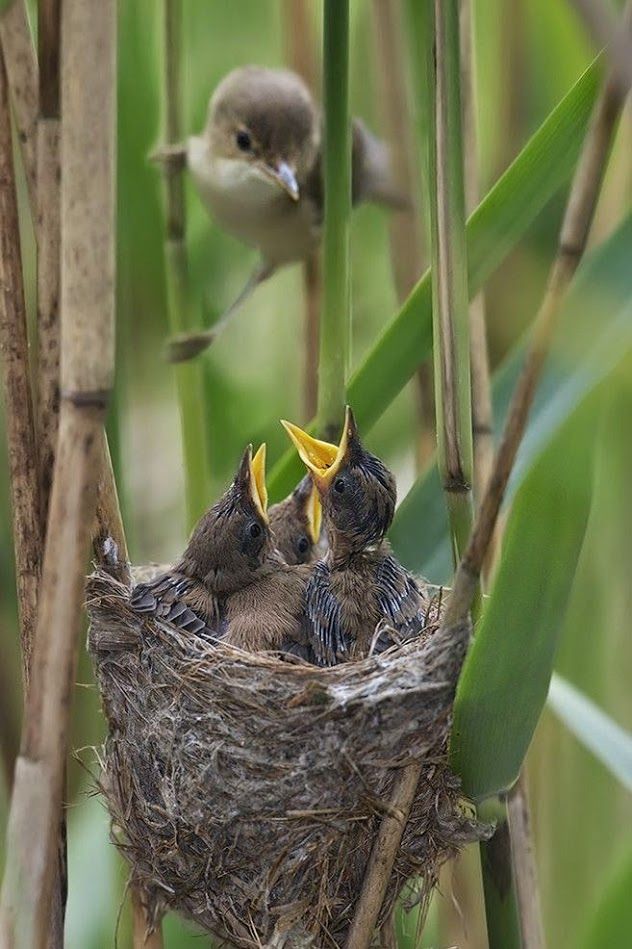 Melissa has studied hundreds of bird species around the world, traveling to Mexico, Central America, the Caribbean, the central Pacific, the Middle East, and more on birding expeditions.
Melissa has studied hundreds of bird species around the world, traveling to Mexico, Central America, the Caribbean, the central Pacific, the Middle East, and more on birding expeditions.
Learn more about The Spruce's Editorial Process
Updated on 08/26/22
Reviewed by
Kathleen Miller
Reviewed by Kathleen Miller
Kathleen Miller is a highly-regarded Master Gardener and Horticulturist who shares her knowledge of sustainable living, organic gardening, farming, and landscape design. She founded Gaia's Farm and Gardens, a working sustainable permaculture farm, and writes for Gaia Grows, a local newspaper column. She has over 30 years of experience in gardening and sustainable farming.
Learn more about The Spruce's Review Board
Fact checked by
Sarah Scott
Fact checked by Sarah Scott
Sarah Scott is a fact-checker and researcher who has worked in the custom home building industry in sales, marketing, and design.
Learn more about The Spruce's Editorial Process
The Spruce / Catherine Song
Every backyard birder has seen the "starving baby" act by fledgling birds, when they flutter their wings and call piteously for attention from seemingly hard-hearted, indifferent parents. The desire to nurture those fluffy balls of feathers can be strong, but it is important to understand the special needs of a fledgling's diet and know what to feed a baby bird for the best nutrition.
Do I Need to Feed This Baby Bird?
Baby birds have very demanding dietary needs. Depending on their age and species, baby birds may eat off and on for 12 to 14 hours per day, consuming a diet rich in insects for sufficient protein to ensure healthy growth. No human other than a licensed bird rehabilitator has the proper equipment, food supplements, or endurance to keep up that frantic feeding schedule. If you find a baby bird that appears to need feeding, the best thing to do is not to feed it, but to get it to an appropriate bird rescue organization.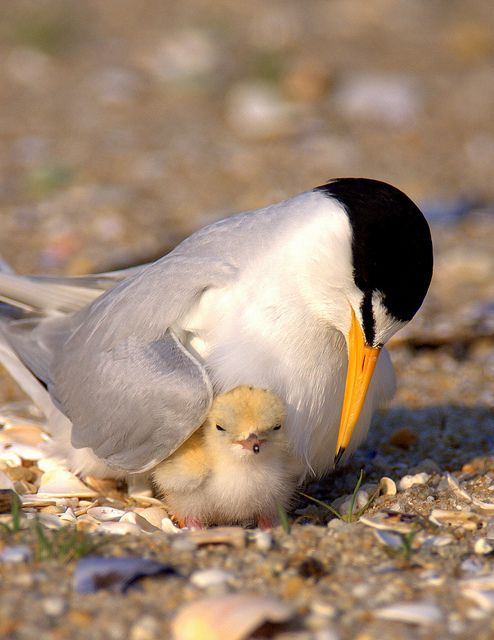 In many cases, the begging birds are not abandoned and the parent birds are nearby and tending to their babies as needed, even if they aren't seen.
In many cases, the begging birds are not abandoned and the parent birds are nearby and tending to their babies as needed, even if they aren't seen.
If you find a baby bird that seems to be unfed, watch the bird closely for a while to see if the parents return to feed it within the hour. Bear in mind that it may take just seconds for a parent bird to deliver a bite to its chick, and inattentive observers may miss several feeding cycles. As the chicks grow, feeding may also be less frequent, and one parent bird may be tending to several offspring in different locations, so parental visits may be uneven. If the baby is being fed, rest assured that the parent bird is able to keep up with its demands, and no intervention is necessary if the baby does not appear injured or ill in any other way.
If the baby bird is not being fed and appears to be growing weaker and more lethargic, the first step should be to find a licensed rehabilitator to provide it proper care. When contacting the rehabilitator, ask for their evaluation of the bird in question before attempting any emergency feeding. If it is recommended that you feed the baby bird, he or she might have specific suggestions in mind as an emergency measure, and those suggestions should be meticulously followed.
If it is recommended that you feed the baby bird, he or she might have specific suggestions in mind as an emergency measure, and those suggestions should be meticulously followed.
If Feeding Is Necessary
If you find a baby bird that needs to be fed but you are unable to contact a bird or wildlife rehabilitator, it is important to know what to feed a baby bird that will provide similar nutrition to its natural diet. While every wild bird has a different diet, several types of food can serve as emergency rations when necessary. At the same time, it is critical to understand that baby birds have very different nutritional needs than adult birds, and foods you would normally feed to your backyard birds are not appropriate for young fledglings.
Good Foods for Baby Birds
- Moist dog food
- Raw liver (no seasoning)
- Hard-boiled eggs
- Dog biscuits (moistened)
- Dog or cat kibble (moistened)
The Spruce / K. Dave
What Not to Feed Baby Birds
- Water
- Bread or bread products
- Whole birdseed
- Milk
- Pet bird food
- Worms
- Kitchen scraps
The more mature a baby bird is, the more "adult" food it can consume without harm, and the longer it can go between feedings.
The Spruce / K. Dave
Tips for Feeding Baby Wild Birds
If it is necessary for you to feed a baby bird, remember:
- Offer food that is spongy in texture, not dripping with water that could cause choking or drowning. All dry food should be softened before being offered to a baby bird.
- Food should be offered at room temperature only, never warmed or heated, and also never refrigerated or chilled.
- Keep bits of food small and in proportion to the bird's size; very small birds need very tiny bites. Cut or crush food appropriately to suit the bird's size.
- While feeding the bird, handle it as little as possible to minimize the risk of additional stress or injury. Never force the bird's bill open to eat.
Caring for Baby Birds
Remember that feeding a baby bird should be an emergency measure only. If a baby bird is abandoned and needs care, it should be taken to a bird rescue organization or experienced rehabilitator as soon as possible.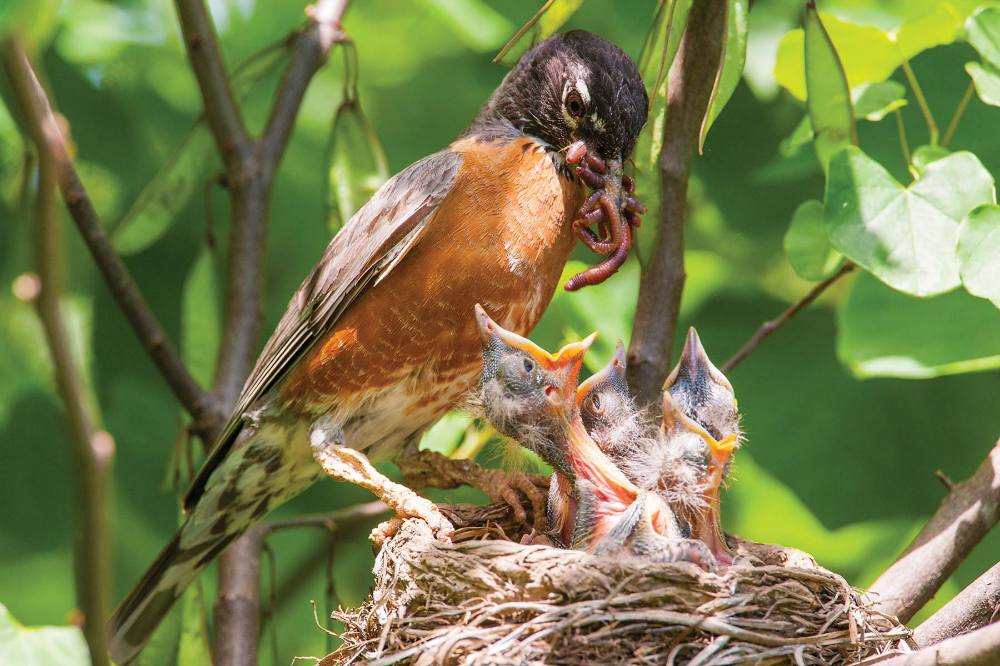 Rehabilitators can not only feed it an appropriate diet for its species but can help it learn how to find its own food, evade predators, and learn other skills necessary for a successful life in the wild.
Rehabilitators can not only feed it an appropriate diet for its species but can help it learn how to find its own food, evade predators, and learn other skills necessary for a successful life in the wild.
If there is no rescue organization or experienced rehab specialist available in your area, keep these tips in mind:
- Identify if the bird is a nestling (few or no feathers) or a fledgling (a feathered bird approaching adulthood). Nestlings will require much attention for a longer period than fledglings, which may be nearly ready for independence quite soon. An older fledgling can sometimes be fine if you simply place it high on a branch where its parents can find it. Nestlings, on the other hand, may require several weeks of attention (assuming a bird rehab organization is not available) to give them a chance for survival.
- Protect it from predators—including family pets. Normally, a simple cardboard box lined with a towel, placed high enough to be out of reach of pets, will suffice.
 If using a lidded container, make sure it is well-ventilated. Ordinary room temperature is normally fine, though a gentle heat lamp can be used if the room is very cold at night. But take care not to overheat the young bird—in most cases, no heat source is necessary.
If using a lidded container, make sure it is well-ventilated. Ordinary room temperature is normally fine, though a gentle heat lamp can be used if the room is very cold at night. But take care not to overheat the young bird—in most cases, no heat source is necessary. - Give it a "nest" by using a small towel or cloth diaper formed into a concave shape and placed in the bottom of the box. This will help support the bird's body until it grows stronger.
- Small nestlings are best fed with moist, well-softened food from a syringe, offered very gently, in small drops. Even a kitchen baster may be too large to be useful. As a nestling grows older, you can offer it food by dangling it from tweezers in front of its beak.
- Never try to feed water directly to a baby bird. Nestlings will get their water needs met through moisture in food. A fledgling can be offered water in a shallow dish—if it's ready to consume water this way, it will drink on its own.
- When a fledgling bird has fully feathered out and is beginning to exercise its wings by flapping, it can be given time outdoors and encouraged to begin flying.
 Often, it is enough to simply set the bird's containment box outside in a safe location, open the lid and wait for nature to take its course.
Often, it is enough to simply set the bird's containment box outside in a safe location, open the lid and wait for nature to take its course.
But remember that raising a featherless nestling bird through the fledgling stage and into a mature adult bird is no easy matter. It's always better to leave this to professionals who are experienced in the practice.
Article Sources
The Spruce uses only high-quality sources, including peer-reviewed studies, to support the facts within our articles. Read our editorial process to learn more about how we fact-check and keep our content accurate, reliable, and trustworthy.
Picking up baby birds can do more harm than good. Oregon State University.
How to feed wild chicks. Recommendations for growing chicks
As the weather gets warmer birds start nesting in our region. A young generation of birds appears, the districts are flooded with bird chirps and large flocks. And among this spring paradise, only one thing worries many people. Chicks, growing up, begin to push in the nest and, as a result, fall out of it to the ground. And often it is certain death. What to do with a chick that has fallen out of the nest?
And among this spring paradise, only one thing worries many people. Chicks, growing up, begin to push in the nest and, as a result, fall out of it to the ground. And often it is certain death. What to do with a chick that has fallen out of the nest?
Let's try to help
Being in the open air during walks in nature, people often see fluttering chicks on the ground. If the chick fell out of the nest, what should I do? Can a person help? The chick is alone, squeaks, trying to shout to its parents, and there are no birds nearby. Reflex reaction - to help the unfortunate.
Do not torment nature
If a sparrow chick fell out of the nest, what should I do? Unfortunately, nothing can be done about this. The problem is that help in the vast majority of cases in such a situation is not needed. This is a necessary stage in the development of many birds (mainly in small passerines). Their chicks leave their nests as half-fledged birds. At this time, they are not yet able to fly, but they are already quickly mastering the space around them - they jump from branch to branch, awkwardly flit. Just such rather lively chicks are seen by walking people.
Just such rather lively chicks are seen by walking people.
This is what a sparrow chick looks like.
Signs of "fidget"
What to do if the chick fell out of the nest? It is not difficult to distinguish by appearance a young sparrow that has fallen out of the nest: it is already feathered or still covered with growing feathers; the chick is large enough (half the size of an adult sparrow). He is often very lively, opens his mouth and asks for food. Parents did not leave their chick, but only flew away for food. Of course, while people are near the chick, adult birds will hide. And if you wander around the neighborhood for a long time, it is quite possible that parents can leave the baby to their fate.
Small birds
When a chick seems very small and helpless, do not try to help it. Chicks should not be taken home and tried to be fed like kittens or puppies. What to do if the chick fell out of the nest? No need to touch the bird, pick it up or otherwise try to help.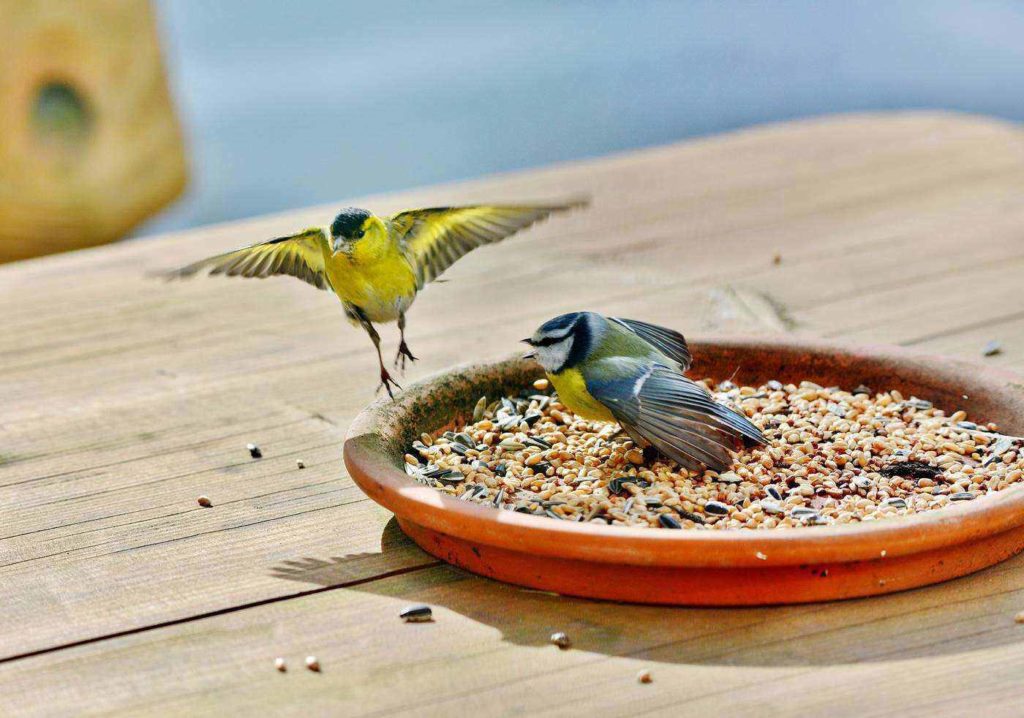 Such birds as warblers, warblers, larks, wagtails, create their nests on the ground, their kids spend the first time in the grass. The presence of humans in this respect is undesirable due to the fact that magpies and crows observe the movement of people and can see where they went, track down and kill the chick. It's better to leave. If the chick is dry, warm, mobile, well feathered, he does not need help.
Such birds as warblers, warblers, larks, wagtails, create their nests on the ground, their kids spend the first time in the grass. The presence of humans in this respect is undesirable due to the fact that magpies and crows observe the movement of people and can see where they went, track down and kill the chick. It's better to leave. If the chick is dry, warm, mobile, well feathered, he does not need help.
Swallow chicks
In the middle zone of the non-Black Earth region, where most of European Russia is located, nests are also built by other birds, for example, swallows. In our area, the so-called coastal swallows live mainly, which live on the banks of reservoirs. Such birds can arrange nests in the roofs of houses and backyards, where later they will hatch several chicks.
If the swallow chicks fall out of the nest, what should I do? The reasons for the loss of chicks from the nest are still little known. According to one version, this can happen through negligence, according to another, parents throw the weakest out of the nest so that the rest have more food.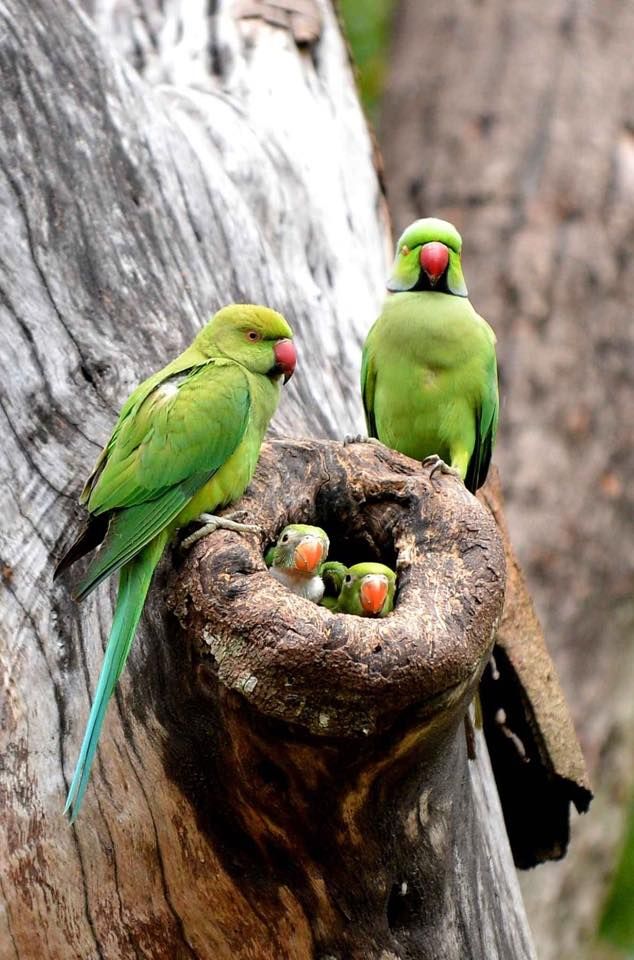
Based on this, it is necessary to act. First you need to put the chick back in its nest. It is important not to hold in your hands for a long time. If the bird smells of human smell, the parents will not take it anyway.
If you failed to arrange a baby in the nest and you are not afraid of "parental" troubles, you can take a swallow chick to your place while growing up. Caring for birds will not let you get bored.
Grown up chicks will fly away to build their own lives. No need to rush them and throw them up. Bird reflexes themselves will tell the kids the time to be in the air. This is what a swallow chick looks like.
Swifts
And if swift chicks fall out of the nest, what should I do? First you need to determine their approximate age. Nestlings and very young swifts can be distinguished from the rest by small white edges at the end of the feathers, as well as by a light spot on the neck.
Most often, chicks fall out for various reasons.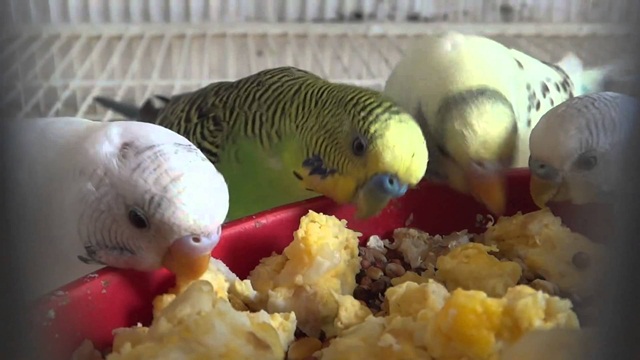 And this is where help is needed. Seeing that this is a chick, do not pass by, take it to your home. The main task is to feed the bird until it is ready for independent flight. This, depending on the age at which the chick turned out to be, will take several days or weeks, a maximum of a month. Shearlings grow quite slowly and, as a rule, become "flying" six weeks after the appearance. However, unlike other chicks, young swifts should not be taught - all the necessary skills are inherent in them at the genetic level. This is what a swift chick looks like.
And this is where help is needed. Seeing that this is a chick, do not pass by, take it to your home. The main task is to feed the bird until it is ready for independent flight. This, depending on the age at which the chick turned out to be, will take several days or weeks, a maximum of a month. Shearlings grow quite slowly and, as a rule, become "flying" six weeks after the appearance. However, unlike other chicks, young swifts should not be taught - all the necessary skills are inherent in them at the genetic level. This is what a swift chick looks like.
Thrushes
Thrushes are useful and interesting birds. But if a thrush chick fell out of the nest, what to do? First of all, don't worry. Thrushes, like other passerines, develop very quickly. In chicks, childhood is divided into two periods: the first - in the nest, the second - on the ground.
It is very easy to see the chicks in the summer in thick grass. Having been born after 15-20 days, they tend to get out of the nest into the grass.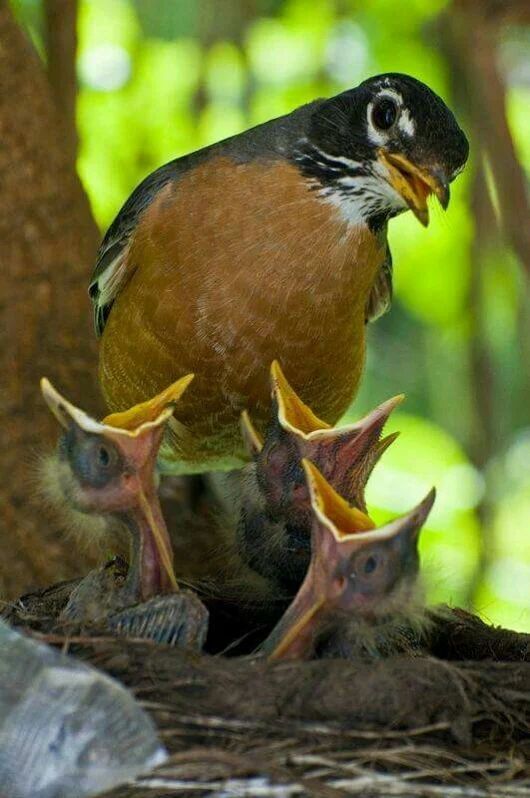 People don't need help. The chicks are in the grass, hiding from predators, waiting for their parents to fly in to feed them, and grow. This is their usual life. Remember that in most cases no one needs to be rescued.
People don't need help. The chicks are in the grass, hiding from predators, waiting for their parents to fly in to feed them, and grow. This is their usual life. Remember that in most cases no one needs to be rescued.
Even if there is an immediate danger, such as your cat changing her diet or a broken wing, you can take your chick home. But keep in mind, you will have to take care (feed, water, clean the cage) for the baby yourself. Birds in captivity are completely helpless. And one more thing - the brought thrushes may well remain in the house, delighting you with their unique singing for several more years. This is what a thrush chick looks like.
Seagulls
Another species of birds that people constantly encounter are seagulls. They live almost everywhere where a human foot has set foot. There are about 20 species of sea and river gulls in Russia, and, for sure, everyone has seen these voracious birds or at least heard their piercing cries. It is not uncommon for gull chicks to fall out of the nest.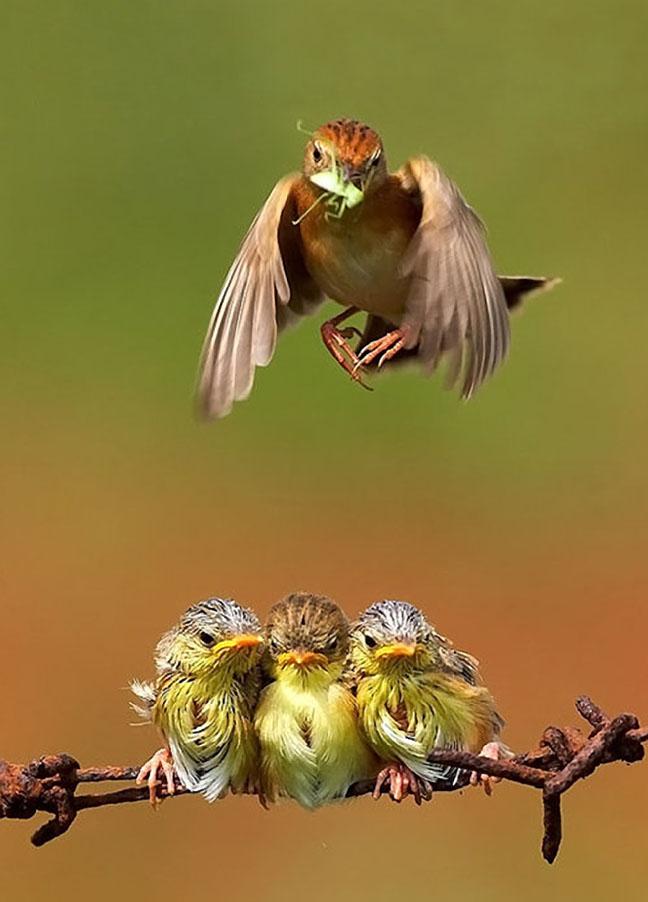 What to do?
What to do?
This is a very difficult question. And the answers of nature lovers, ornithologists are very different. But in any case, if you find a gull chick and you see that he is healthy, try to put him back in the nest. Birds live in colonies, you can just give it there. Without adults, it will be difficult for the chick to survive.
If you see signs of various illnesses or injuries, you can take him to you, although it will be difficult. Seagulls are not domestic birds, and it is almost impossible to accustom them to life in the house. But if you manage to cure and grow a seagull to an adult state, then you have already lived your life in vain. This is what a gull chick looks like.
Help needed
What should I do if my chick has fallen out of the nest? If the situation is critical and you see that the chick may die (regardless of the type of bird), then it has to be saved. But at the same time, some rules must be observed:
- Carefully, but in a very short time, inspect the location of the chick.
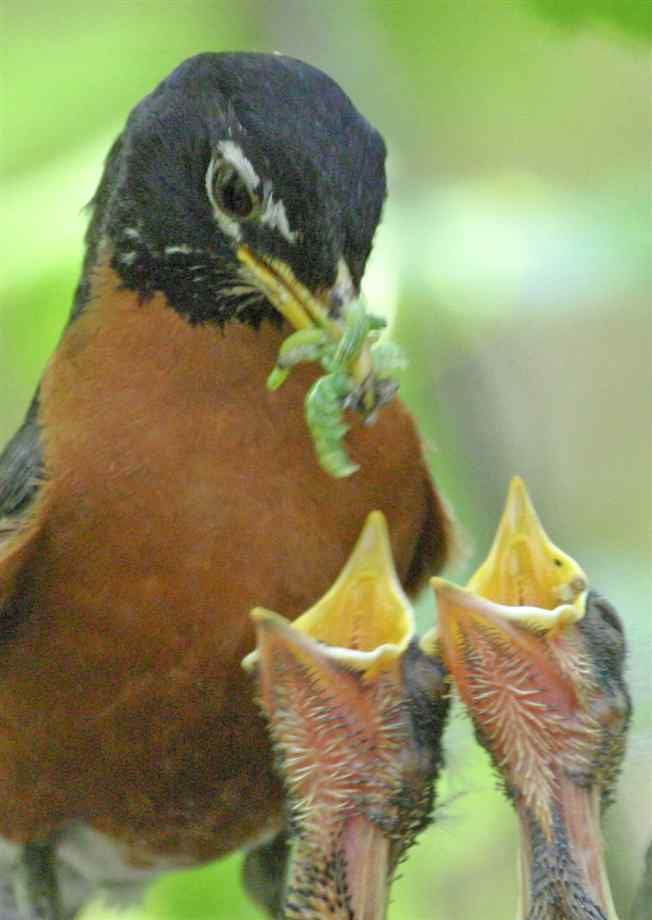 Sometimes this makes it possible to recognize the type of bird.
Sometimes this makes it possible to recognize the type of bird. - Pick up the bird (carefully) and quickly bring it into the house.
- Inspect the chick along the way for damage. If the baby has clearly visible fractures of the paws, wings, a blow to the head, then medical care is indispensable. In this case, it would be good to seek help from an ornithologist.
- If there are no signs of physical damage, and the general condition of the chick is normal, then it is better not to touch it, but only provide food and shelter - nature will heal itself and it will recover.
- Bringing the chick home, you need to protect him, for safety reasons, from contact with other animals.
What to feed
There is a popular misconception that a bird can be fed regular plant food. Alas, if this is not a dove, then living insects will be normal food. So get ready. Either you need to run to the pet store for worms, larvae and something like that, or catch / dig / collect wild insects.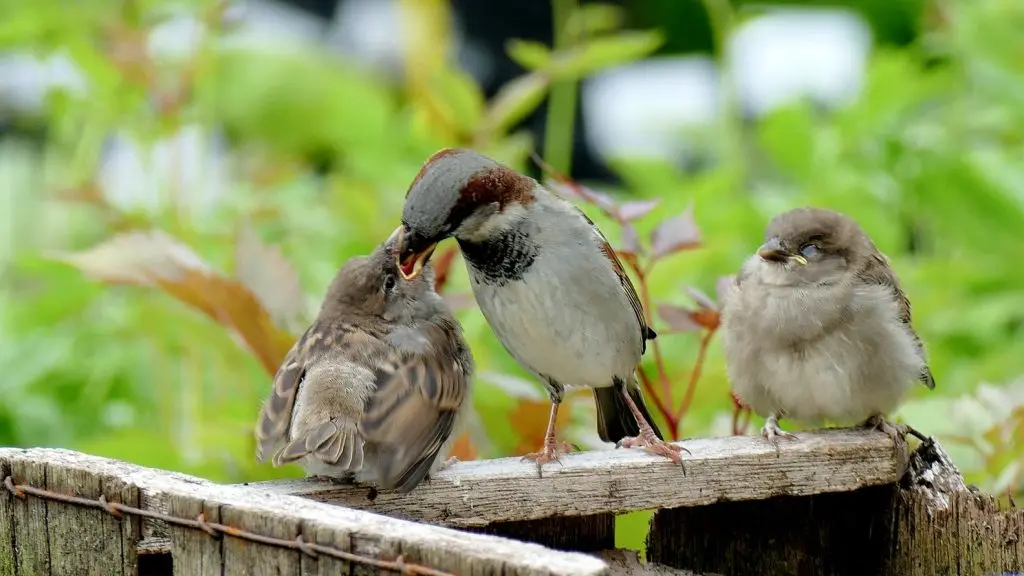 Do not feed:
Do not feed:
- Dead insects as it is not known what they died of.
- Colorado beetles.
- Brightly colored insects.
How to feed
What if the chick has fallen out of the nest and is asking for food? Birds, and especially chicks, have a very fast metabolism. This must be taken into account and feed them often, literally constantly. Otherwise, they simply die of hunger. At the same time, some of them, especially waterfowl, need water. Representatives of these species need to put a drinker. The rest of the chicks get water from food.
Where to settle
The chick needs to make a shelter, that is, literally build a nest. To do this, you need a deep bowl or box about 10 cm high. The container must be filled with sand, grass, straws, small twigs, earth, pieces of cloth - everything that is usually found in bird nests. You can not fill the nest with cotton wool, fabrics with rare threads, yarn for knitting. In the nest it is worth laying a paper napkin in two layers.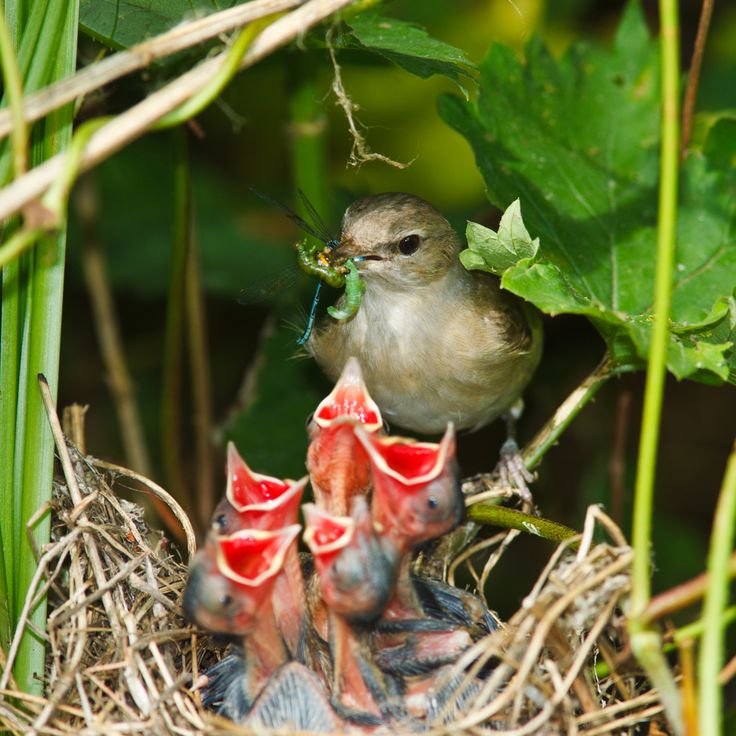 It will need to be changed after each feeding.
It will need to be changed after each feeding.
The chick needs to be kept safe. It must not be reached by pets or children. No need to try to plant a chick on a perch or settle it in a closed container. The nest is best placed in an empty aquarium, covered with gauze or mesh on top, not left high. Otherwise, the grown chick can go to explore the territory, fall out and hurt something.
Quite often, at the end of spring and at the beginning of summer, people resting in the forest stumble upon a nestling of a bird of prey sitting on a branch or on the ground, and even more often an owlet. Sometimes this “living toy” found is carried home. After playing with it for a day or two, they start calling zoos, nurseries and other organizations to give it away. Some want to get more money for it. It also happens that the “rescued” chick has been so tortured and fed with something that it is no longer possible to help him.
What to do if you find a chick of a bird of prey?
If you find a bird of prey chick, take a closer look at where it is. Usually the chicks of birds of prey and owls leave the nest before they can fly, and disperse along the branches or on the ground near the nest. Parents fly up to each separately, as a rule, first to the most noisy, i.e. the hungriest, and feed him.
Usually the chicks of birds of prey and owls leave the nest before they can fly, and disperse along the branches or on the ground near the nest. Parents fly up to each separately, as a rule, first to the most noisy, i.e. the hungriest, and feed him.
Hawk cubs and buzzards leave their nests with half-grown tails. Owlets still down jackets. The nests of harriers (except marsh) and marsh owls are located on the ground. Their chicks also scatter.
If a bird of prey chick sits on a branch or stump, this is normal and should not be touched.
- If a predatory chick sits on the ground in weeds or thickets of nettles, in a field in the grass, inside a bush - this is also normal.
A chick of a bird of prey nesting in a tree falls to the ground very rarely. This happens most often when the chick is already half-fledged and begins to jump over the branches near the nest and fly up. But such a chick will already be able to climb onto an inclined bough or stump, where its parents will feed it.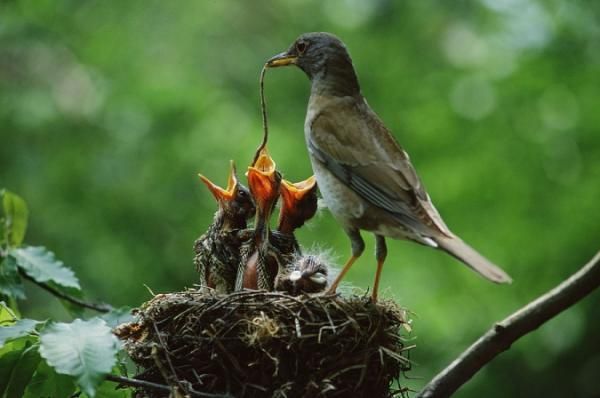 Owlets that have fallen to the ground climb a tree with their beak and claws, clinging to the bumps in the bark, like parrots. Adult owls are usually nearby and attack a person, intimidating him with a click of his beak. Birds of prey in the open fly restlessly with a cry, and in the forest their alarm cry is often just heard.
Owlets that have fallen to the ground climb a tree with their beak and claws, clinging to the bumps in the bark, like parrots. Adult owls are usually nearby and attack a person, intimidating him with a click of his beak. Birds of prey in the open fly restlessly with a cry, and in the forest their alarm cry is often just heard.
When can you save a bird of prey
The hooded crows serve as a reason to take and really save a chick of a bird of prey. When you see that they curl with heart-rending cries and attack someone, come and have a look. If the object of their attacks is a chick of a bird of prey, an owlet or some other bird, then, of course, it is better to take it away. Otherwise, he is still not a tenant, the crows will hammer him. Morality and law diverge here. Legally, you are a poacher, but morally, you are a savior. The choice is yours.
The nestling thus came to you. You do not trust any rehabilitation centers and falconers, you decided to grow it yourself and return it to nature. What to do?
What to do?
Feeding, care and treatment of chicks of birds of prey
Inspection of a bird of prey chick
First, inspect the chick. You can carry it home either in a bag or in a plastic bag, making something like a nest out of branches or grass there. The bag or package must be opened to maintain air ventilation. If in the spring on a cool day the chick is wet, carry it in your bosom and warm it. You need to carry it carefully so as not to hit anything and not to crush. Be sure to carefully inspect the chick. You can understand that he is exhausted by the keel strongly protruding on his chest and general lethargy. Wounds, fractures, dislocations are usually clearly visible. Opening the beak, see if there is a white coating inside. Feel your belly. It is possible to determine whether the chick of a bird of prey was fed by its parents by probing its goiter, and the owlet's stomach.
How to water a bird of prey chick
After carefully examining the chick of a bird of prey, first give it a drink.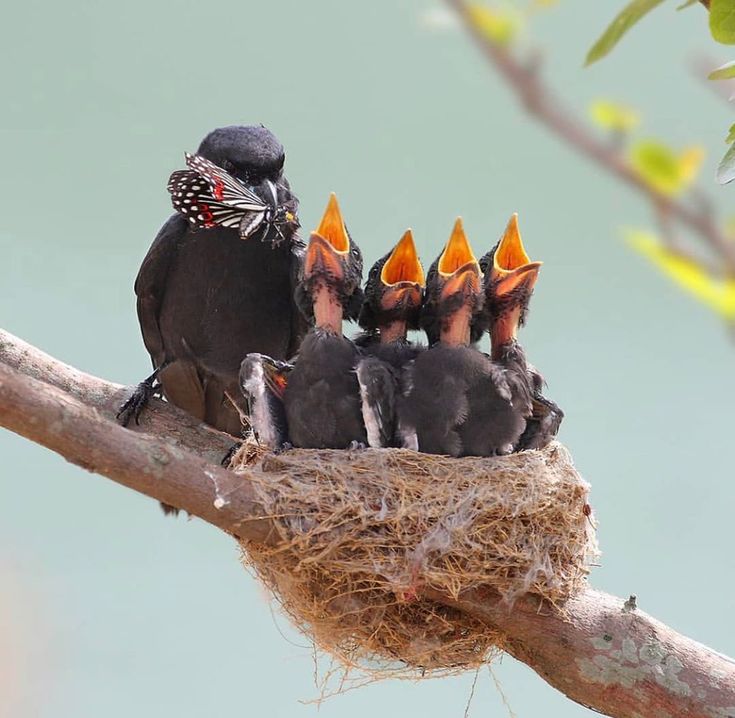 This can be done by inserting a rubber or soft plastic tube neatly, deeper into the beak, and then pouring water into it by mouth, little by little. You need to pour in very carefully, making sure that the water passes into the goiter (birds of prey) or into the stomach (owls) and the chick does not choke. It is better to drink by force together. One holds, the other pours. How much to pour? Do not overdo it. Depending on the size of the bird, it is better to do it a little in two or three doses.
This can be done by inserting a rubber or soft plastic tube neatly, deeper into the beak, and then pouring water into it by mouth, little by little. You need to pour in very carefully, making sure that the water passes into the goiter (birds of prey) or into the stomach (owls) and the chick does not choke. It is better to drink by force together. One holds, the other pours. How much to pour? Do not overdo it. Depending on the size of the bird, it is better to do it a little in two or three doses.
Prepare a place for the temporary keeping of the chick. An ordinary spacious cardboard box is well suited for this, the bottom of which is lined with pieces of torn paper or newspaper. This is done so that these pieces are mixed with litter and the chick does not get dirty. Yes, and he will sit in such a box both dry and soft. This bedding is changed regularly. Cut holes in the box with a knife for ventilation.
How to feed a bird of prey chick
Feed. What and how to feed? The most frequently asked question.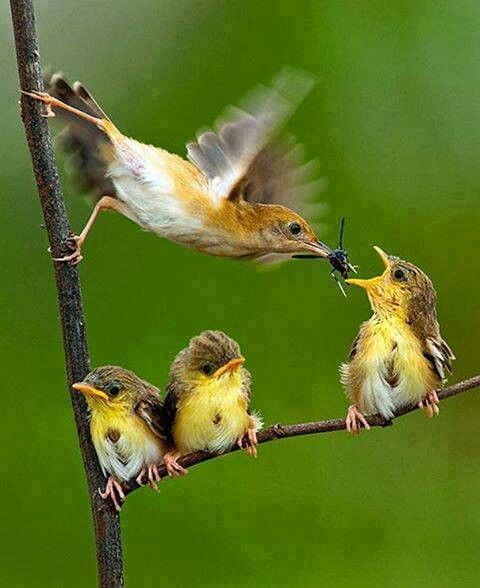 Of course, it is not necessary to give either sausages, or bacon, or bread, which is often done. Birds of prey and owls eat fresh meat. Usually the food supply is kept frozen. But you can’t give ice cream cold meat. The meat must be thawed and warmed, and fed a little heated, at least to room temperature. Before feeding in the summer, in very hot weather, water must be added to the feed. The simplest and most affordable food is veal. 1/10 of a veal or beef liver is added to it. This needs to be cut into pieces depending on the size of the bird so that it is easy for her to swallow. Also add 1/10 - 1/16 of undevit powder crushed into dust (per kilogram of weight) and ¼ of glycerophosphate or calcium gluconate. Mix everything with the addition of a raw egg (weight is gained faster) and a piece of cotton wool the size of a finger knuckle. It is good to add a pinch of grated carrots. I worked out this composition for a very long time, and the chicks grew well on it. Meat base, i.e. veal, for various reasons, can be replaced with veal heart, chicken heads, day old chickens, pigeons, crows, in extreme cases, chicken legs.
Of course, it is not necessary to give either sausages, or bacon, or bread, which is often done. Birds of prey and owls eat fresh meat. Usually the food supply is kept frozen. But you can’t give ice cream cold meat. The meat must be thawed and warmed, and fed a little heated, at least to room temperature. Before feeding in the summer, in very hot weather, water must be added to the feed. The simplest and most affordable food is veal. 1/10 of a veal or beef liver is added to it. This needs to be cut into pieces depending on the size of the bird so that it is easy for her to swallow. Also add 1/10 - 1/16 of undevit powder crushed into dust (per kilogram of weight) and ¼ of glycerophosphate or calcium gluconate. Mix everything with the addition of a raw egg (weight is gained faster) and a piece of cotton wool the size of a finger knuckle. It is good to add a pinch of grated carrots. I worked out this composition for a very long time, and the chicks grew well on it. Meat base, i.e. veal, for various reasons, can be replaced with veal heart, chicken heads, day old chickens, pigeons, crows, in extreme cases, chicken legs.
For an emaciated chick, at the first feeding, give meat little by little, with water, finely chopped, and watch how the food is digested. The goiter should disappear, and the chick should begin to perform its natural needs, shooting back with droppings. If the goiter does not disappear, i.e. does not become smaller, you need to pour sweetened tea with lemon juice using a syringe with a tube. From this, food is better absorbed and the intestines work.
If the chick does not begin to eat on its own before dusk, force-feed very carefully.
Worms in a bird of prey chick
Deworm. In chicks, the presence of worms can be determined by bloating and general exhaustion, but more often this is not noticeable. It is dangerous to give an anthelmintic immediately to a severely malnourished chick. You need to pre-fat, with a week. Usually I gave panakur, calculating it by weight, and no side effects were found from its use. A good drug, but at present Panakur is practically not sold in veterinary pharmacies. In addition to panakur, he used albendazole. I have been giving Vermizola-10 for the last two years. The drug, calculated by weight, I give with food and repeat in two weeks. If you cannot find these drugs, consult a veterinary clinic or pharmacy. They will advise you how to proceed.
In addition to panakur, he used albendazole. I have been giving Vermizola-10 for the last two years. The drug, calculated by weight, I give with food and repeat in two weeks. If you cannot find these drugs, consult a veterinary clinic or pharmacy. They will advise you how to proceed.
Lice on a bird of prey
Disease prevention in chicks of birds of prey
Treat a bird of prey chick for prevention. The simplest, proven over the years and quite effective method is the following. Four days in a row, per kilogram of bird weight, ¼ ampicillin tablet, ¼ Trichopolum tablet and 1/16 undevit are given with food. After 10-14 days, the course is repeated. Already after the first course of such treatment, the state of a lethargic chick of a bird of prey improves, it becomes greedier.
Diseases of birds of prey
What diseases are most common in raptor chicks and can you identify and treat them yourself? Forcibly open the beak and see if there is a white coating inside. If there is, then it is either aspergillosis or trichomoniasis . Trichomoniasis (trichomoniasis) is easily treated with Trichopolum. Approximately ¼ tablet is given for four days per kilogram of bird weight and repeated after 10-14 days. Aspergillosis is practically incurable. A bird with aspergillosis is usually doomed. If a white plaque in the throat after the first course of treatment with Trichopolum began to disappear and the bird began to eat with appetite, you are lucky, you will live. It was not aspergillosis, but trichomoniasis, and you cured it.
If there is, then it is either aspergillosis or trichomoniasis . Trichomoniasis (trichomoniasis) is easily treated with Trichopolum. Approximately ¼ tablet is given for four days per kilogram of bird weight and repeated after 10-14 days. Aspergillosis is practically incurable. A bird with aspergillosis is usually doomed. If a white plaque in the throat after the first course of treatment with Trichopolum began to disappear and the bird began to eat with appetite, you are lucky, you will live. It was not aspergillosis, but trichomoniasis, and you cured it.
Wounds on birds of prey usually heal well. Sprinkle with streptocide and hold it alone.
For tarsal fracture , if it is not possible to take to a veterinarian, you can try to apply a splint yourself. With a hip fracture, this is much more difficult to do. Broken-wing bird of prey is practically doomed. Only highly qualified doctors in specialized veterinary clinics can help in this case.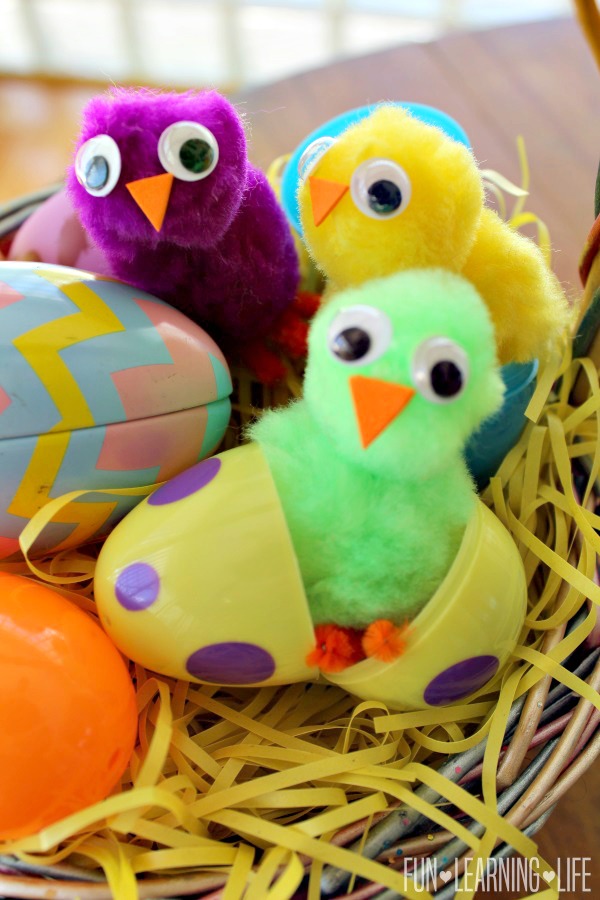 Therefore, try to deliver a chick with a broken wing to such a hospital as soon as possible. Sick chicks during any treatment are best kept in a box and less disturbed.
Therefore, try to deliver a chick with a broken wing to such a hospital as soon as possible. Sick chicks during any treatment are best kept in a box and less disturbed.
How to teach a chick of a bird of prey to catch prey
Teach a baby bird of prey how to catch prey. You need to learn to grab something moving. This is not difficult. For this, the chick must be healthy and strong. Healthy birds of prey have a good appetite and are greedy. From the moment when the feathers on the tail grow in half, you need to start giving the hawk the carcasses of pigeons, rooks, and crows cut in half into feathers. If not, buy at least quails, grown chickens or rats. Ten is enough on average. First, the hawk will learn to pluck and tear "prey". Having got used to doing this, and not waiting for you to put a piece in his open beak, he will gradually begin to grab this chopped carcass when it is dragged past him by the cord. Graduality is important here.
Where to release a bird of prey
Before releasing, make sure that the chick you have reared can fly well and knows to grab moving, i. e. grabs the carcass when you drag it. If the hawk does not yet know how to fly or flies badly, it should not be released, but planted in some hawk nest with chicks. In extreme cases, you can plant it in the nest of a buzzard or kite. Both of these birds feed adopted children well.
e. grabs the carcass when you drag it. If the hawk does not yet know how to fly or flies badly, it should not be released, but planted in some hawk nest with chicks. In extreme cases, you can plant it in the nest of a buzzard or kite. Both of these birds feed adopted children well.
Should be released where there is a lot of food and hawks nest. Otherwise, the chick will be doomed to starvation. Large landfills are best suited for this. Knowing how to fly well, your fosterling will easily hide in the nearest forest from the crows chasing him. And the crows, accustomed to constantly seeing hawks flying along the edges of the forest adjacent to the dump, do not really react to them. You will need to spend a day walking around the landfill. The loud cries of the young, if the hawks were nesting near the landfill, you will hear from afar. They usually call at the nest. You need to go to these screams and remember the place where you shouted. It is better to release a pet in the evening, fed to satiety, in the place that you remember where the brood screamed.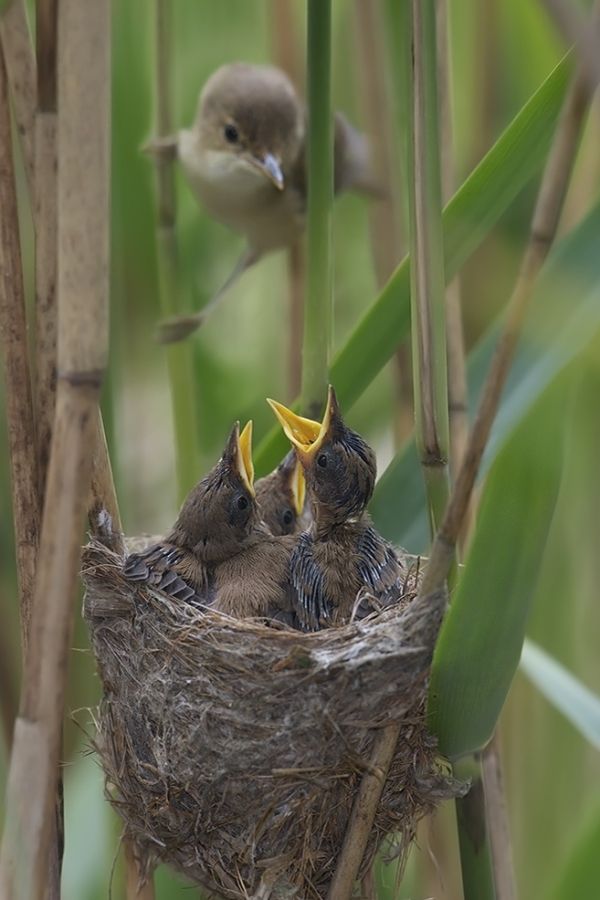 In the morning, a hawk, hungry, will easily find a nesting pair by the cries of the young and join it.
In the morning, a hawk, hungry, will easily find a nesting pair by the cries of the young and join it.
With the arrival of the long-awaited spring, parks, forests and gardens are filled with bird songs, eventually replaced by the squeak of their offspring. While walking through city parks, people quite often find newly fledged chicks and, feeling sorry for the kids with all their hearts, begin to figure out how to help them.
However, this matter is not as simple as it might seem at first glance (and, according to experts, it is far from always necessary, but rather harmful).
In order not to cause more irreparable harm to the birds than any real help, let's first figure out how to help a little bird that has fallen out of the nest and in what case it is possible to save the fallen chicks.
Is it worth saving a fallen chick?
If during a walk in the forest or park you find a chick that has fallen out of the nest, do not rush to help him, experts do not advise doing this .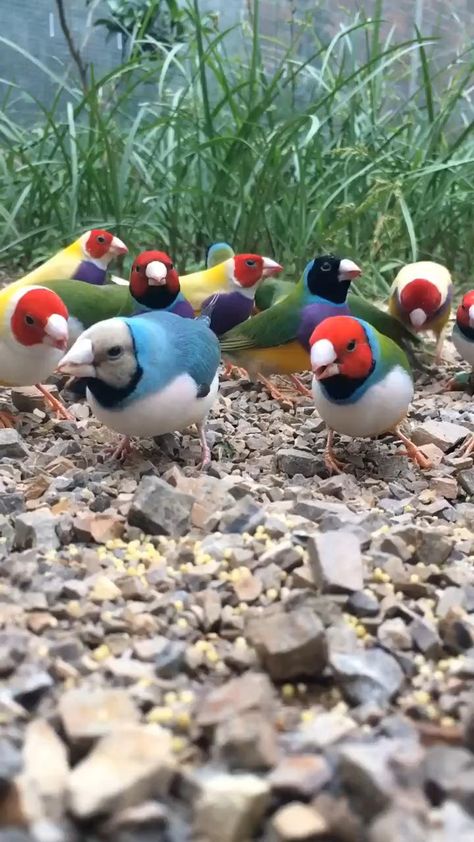 The person who found the chick immediately decides that the baby fell out of the nest by accident, got lost or was abandoned to the mercy of fate by cruel parents and he is certainly in danger of life.
The person who found the chick immediately decides that the baby fell out of the nest by accident, got lost or was abandoned to the mercy of fate by cruel parents and he is certainly in danger of life.
A baby who screams and is clearly completely unable to fly causes deep sympathy in our hearts. It seems that if urgent help is not provided, he will immediately become a light dinner for a predator or die from lack of food and hypothermia.
However, this is not always the case. Many chicks, especially those of the passerines, leave the nest as soon as they have feathers. They are not yet capable of a full-fledged flight, but they can flutter from bush to bush. It is these babies that are most often mistaken for lost chicks, but the help of a person can cause them a severe shock.
The fact is that if the chick is really lost, then the parents are looking for him, but they are afraid to fly up to him because of the person, since they perceive him as a threat.
Important! If you stay close to the chick for a long time or, what is worse, take it in your hands, then in this case the parents can really leave it because of the stress experienced.
Moreover, some types of feathered breeds build their nests not on trees, but on the ground, and such chicks should not be surprising.
What to feed a chick that has fallen out of the nest
If, nevertheless, you took the chick home, then get ready to solve a number of significant problems. A chick is not a puppy or a kitten, it needs special care and the main serious problem is food. For good nutrition, young chicks need high-calorie protein foods.
Important! Their diet should include insect larvae, caterpillars and various midges, and parents give grains to chicks only previously soaked in the goiter. At home, they can be prepared by long boiling or soaking.
As you can see, feeding the chicks is not an easy task. And for those people who spend a lot of time at work, such a task becomes completely impossible. Therefore, think again - is it worth "saving" the chick?
How to properly feed a found chick
If it is clear what to feed the chicks, then an equally important question arises - how to feed them. It must be understood that metabolic processes in a young organism proceed instantly and this means that the chicks digest food very quickly and soon again experience severe hunger.
It must be understood that metabolic processes in a young organism proceed instantly and this means that the chicks digest food very quickly and soon again experience severe hunger.
It's hard to believe, but in nature winged parents feed their offspring up to 100-200 times a day . Restless and hardworking birds need to throw something into the voracious beak of the chick every 15-20 minutes. Therefore, in order to weaken and die, the chick needs only a few hours of hunger.
If you brought a chick home, then you will have to become caring parents for him and feed him every 15-20 minutes, and when he gets a little older, you need to gradually increase the intervals between meals up to 30-40 minutes.
At night, you can feed the chick less often, but it is important to follow one rule: the last feeding should not be earlier than 22:00, and the first - not later than 6:00 in the morning. Give food to the chicks with tweezers. This will remind the chick of the beak of the parents and will not frighten him.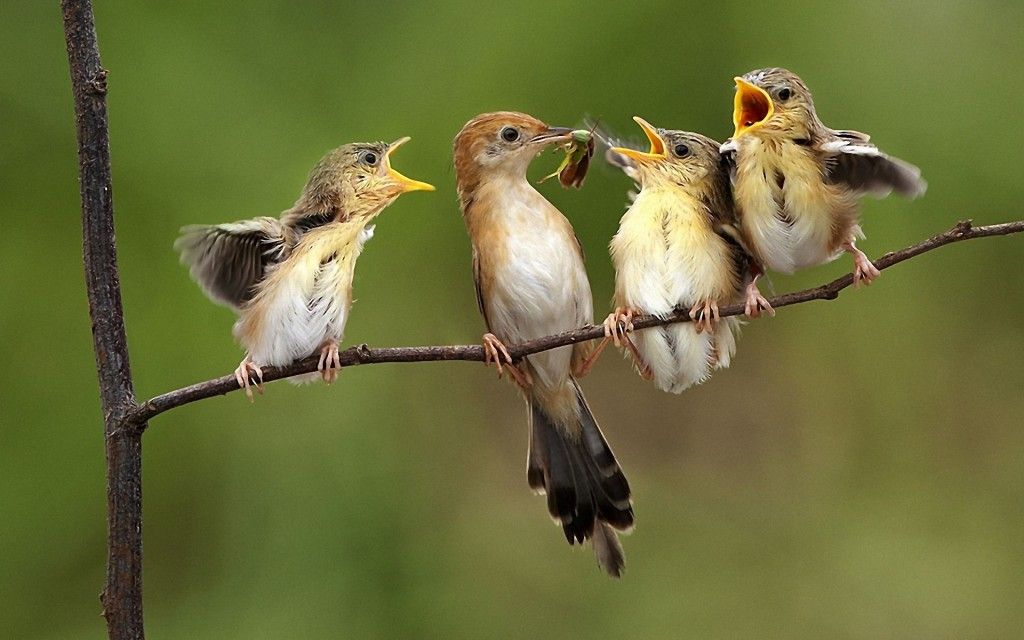
What not to give to found chicks
Many people think that grains, seeds or bread crumbs can be given to chicks - this is not so, such food can kill the baby. If we talk about plant foods and specifically about cereals, then they must be cooked to a pasty state, after which they must be cooled. It is in this semi-digested form that birds give grain to their chicks.
Is it necessary to give water to a chick
Under natural conditions, chicks drink very little, as they get the necessary moisture from food. If you can provide your pet with wet food in the form of worms or insect larvae, the bird can not be watered. When the food is based on cockroaches or crickets, then it is considered dry, so your pet needs to be watered from a pipette 3-4 times a day. Each breed of bird has its own characteristics, you can find out more from your veterinarian. There are some birds that do not need to be watered at all.
Where to house a chick that has fallen out of the nest
If you brought a chick home, then he needs to equip a separate place where he will feel comfortable. You can take a bowl with high sides or a box at least 10-12 cm high.
You can take a bowl with high sides or a box at least 10-12 cm high.
Important! Sawdust, straw, a piece of cloth should be placed in the resulting nest, and a small depression should be made in the center. A couple of napkins should be laid in the hole to provide the chick with a toilet.
In natural conditions, both parents clean the nest, but you will have to clean the nest yourself after you have fed your new pet.
Do not use fresh grass, because your baby can get hypothermia from dampness, because there is no one to warm him - there are no parents nearby. It is not recommended to use synthetic materials as bedding. A small chick may be allergic to them and it may get sick.
Also, you can not use gauze, as the baby can get tangled in the threads and get hurt and even die . The nest of the baby must be kept in an inaccessible place so that the cat or dog, if they live in your home, cannot get to it.
In the spring, when most of the birds breed, chicks that have fallen under the trees are not uncommon.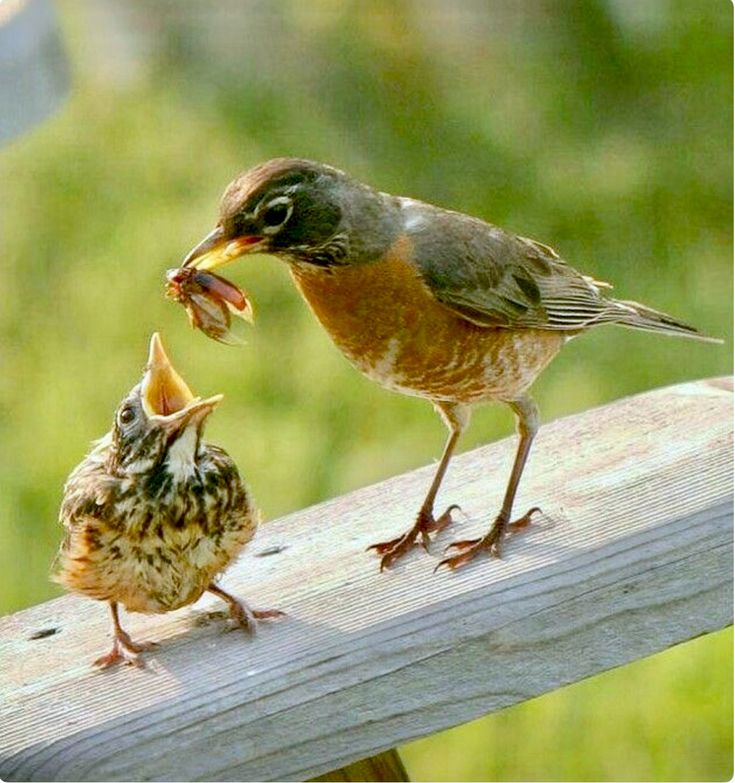 Little yellow-billed birds look so pathetic that many people begin to torment themselves and take such chicks home: to warm, feed, save.
Little yellow-billed birds look so pathetic that many people begin to torment themselves and take such chicks home: to warm, feed, save.
So, a little sparrow chick fell into your hands. What to feed such a baby? These birds are probably the most common feathered inhabitants of our continent. There is no place where they cannot be found. They are already distinguished by their small size, and even their chicks look completely tiny - it’s scary to breathe on such a person, let alone feed him! But you will have to feed, since he got into your house.
What to feed First, remember that small chicks - sparrows, tits, larks - eat food in the amount of ¾ of their weight per day. Naturally, it is best if the bird's diet is based on insects familiar to it: flies, worms, grasshoppers, larvae, bugs. But, of course, getting them is not easy. What else does he eat What to feed him, and what not to? For some reason, in fairy tales, books, films, sparrows are fed with bread. However, this is absolutely not possible. Bakery products can be given to a chick no more than once every two days, and even then only in the form of a crumb soaked in milk. In addition, you can give a little finely chopped raw or boiled meat, steamed oatmeal or seeds of cereals of milk ripeness, ground in a mortar. Suitable for feeding grated vegetables (carrots, cucumbers, beets), squeezed from excess juice. Also, you can feed the chick with cottage cheese or a boiled egg, as long as the food is unsalted. It is better to add a little crushed chalk or coal to the food (a sparrow chick will be happy with such a seasoning) than to feed it with salty food. Salt should not be given to birds at all!
Bakery products can be given to a chick no more than once every two days, and even then only in the form of a crumb soaked in milk. In addition, you can give a little finely chopped raw or boiled meat, steamed oatmeal or seeds of cereals of milk ripeness, ground in a mortar. Suitable for feeding grated vegetables (carrots, cucumbers, beets), squeezed from excess juice. Also, you can feed the chick with cottage cheese or a boiled egg, as long as the food is unsalted. It is better to add a little crushed chalk or coal to the food (a sparrow chick will be happy with such a seasoning) than to feed it with salty food. Salt should not be given to birds at all!
Since the chick is still small, it must be fed frequently (at least once every two hours). difficult, therefore it is considered that it is difficult to feed the chicks of small birds. Do not forget also that in addition to food, the bird must have clean water. Try to get the chick to eat on its own, but if that doesn't work, try giving food by opening its beak with tweezers.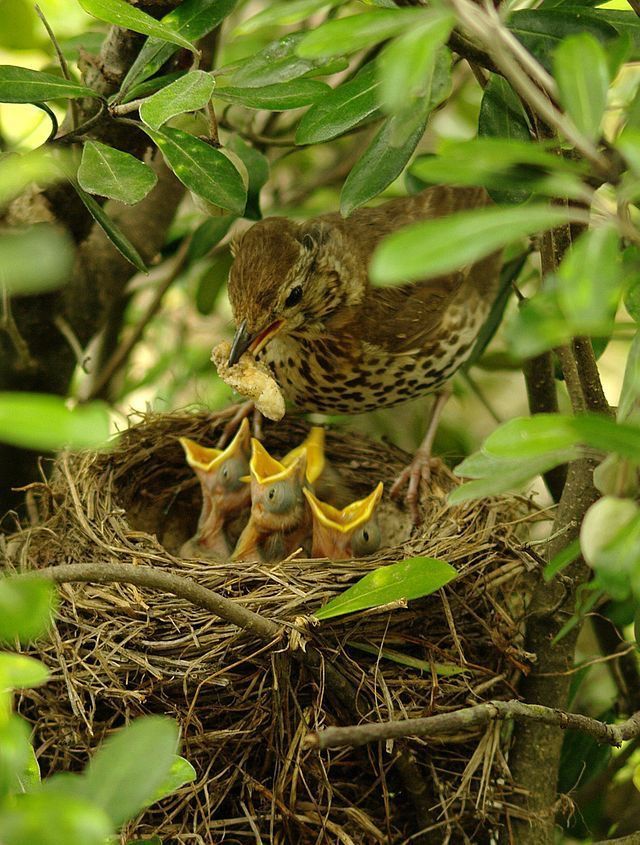
But in general, before leaving the sparrow chick, think: perhaps it is better to leave it where it is? Most often, the so-called fledglings fall out of the nests. These are chicks that cannot yet fly, but have made their first attempt at it. Their parents then try to finish feeding their child already on earth. And if there is not a large population of stray cats and dogs in the area, the probability of surviving such a chick in the wild is much higher than at home. Remember that very often chicks die at home due to improper maintenance or feeding. And if you really want to take part in saving the bird, you might be better off placing a feeder with food where the sparrow's chick is, rather than feeding it at home in a cage. Remember: captive-bred birds die quickly when released into the environment.
Find a place for him first. A small box will do, with a soft cloth on the bottom. Make sure the chick doesn't jump out of it. Very tiny ones need heating. To do this, you can use a heating pad or just a bottle of warm water.
What can you feed a sparrow chick?
First of all, it should be remembered that the chicks of insectivorous small birds - larks, tits - eat food with a volume of 3/4 of their weight in one day. It is best that the bird's diet is based on insects familiar to it: worms, flies, grasshoppers, bugs, larvae. However, of course, getting them is not so easy.
For some reason, sparrows are usually fed in books, fairy tales, films. But this is by no means possible. You can give a chick bakery products no more than once every 2 days, and even then only in the form of a crumb soaked in milk. In addition, you can gradually give finely chopped boiled or raw meat, grated in a mortar and steamed cereal seeds or oatmeal.
Vegetables are also suitable for feeding - beets, cucumbers, carrots. They need to be crushed on a grater and squeezed out of excess juice. You can also feed the sparrow chick with a boiled egg or cottage cheese. The main thing is that this food should be unsalted. It is advisable to add a little coal or crushed chalk to the food - the chick will be happy with such a seasoning. In turn, it is strictly forbidden to give salt to birds.
It is advisable to add a little coal or crushed chalk to the food - the chick will be happy with such a seasoning. In turn, it is strictly forbidden to give salt to birds.
Try to get the chick to eat on its own, but if that doesn't work, you can feed it by opening its beak with tweezers. Since she is still small, she needs to be fed often - at least once every 2 hours. This is a rather difficult task, and therefore it is believed that it is difficult to feed the chicks of small birds. In addition, do not forget that in addition to food, the bird should also have clean water.
Before leaving the sparrow chick, think
Before leaving a sparrow chick, think about it: maybe it's better to leave it where you found it? In most cases, fledglings fall out of the nests. This is the name of the chicks that do not yet know how to fly, but made their first attempt to try it. Their adult parents then try to feed their offspring already on the ground.
If the district does not have a large number and
How to feed a wild duckling at home: compiling a menu for a chick
18. 02.2022 22 518 21 0 Breeding and keeping ducks
02.2022 22 518 21 0 Breeding and keeping ducks
Author:Mykhailo
It is no secret to anyone that breeding wild ducks is possible at home. With patience, you can get a small herd. This is due to the fact that birds are unpretentious in keeping. Caring for ducks can bring a lot of positive emotions. And in this review we will talk about how to care for them and feed them.
Contents:
- 1
Characteristics of wild ducks
- 2
How to keep them properly
- 3
Feeding wild birds
- 3.1
What should birds not eat?
- 3.1
- 4
Birds love to swim
- 5
Additional recommendations
- 6
Video “Dying Birds”
Features of wild ducks
Wild ducks do not need special conditions of detention. They do not need to be fed any specific food. There is no need for additional heating of the house, there is no need to arrange special cages. In addition, you do not need to purchase an incubator. This makes raising birds easy even for beginners.
In addition, you do not need to purchase an incubator. This makes raising birds easy even for beginners.
As shown by numerous videos, wild ducks can live both in winter and in summer in a simple brick shed. For full-fledged breeding, you will need to design a special corral, enclosing it with a net. Ducks are able to easily endure low temperatures, coping well with adverse conditions.
The summer period can be called the bathing season. Ducks at this time try to spend as much time as possible in the water, to swim.
Birds require the same amount of water in both winter and summer. Poultry farmers will need to ensure that the drinker is constantly filled. In addition, the water must be fresh. In the summer, greens and small fish should be added to the duck's diet.
Keeping wild birds in bad or hot weather may require the construction of a special shelter. Under it, ducks can hide from the sun or rain.
With the onset of warm weather, females begin to build nests and incubate eggs.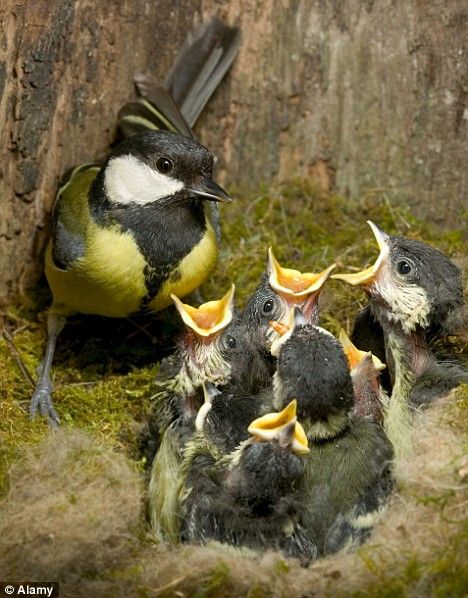 Little ducklings hatch into the light. Wild birds are considered magnificent mothers. They are excellent at incubating eggs.
Little ducklings hatch into the light. Wild birds are considered magnificent mothers. They are excellent at incubating eggs.
The drake also takes an active part in raising ducklings. He is next to the offspring, guarding him. You should know that on the 70th day the drake begins to molt. Therefore, it must be sent to the slaughter earlier. Otherwise, it will be difficult to pluck it.
The video will show what wild ducklings look like when they live at home.
How to properly care for
Experts in numerous videos say that ducklings need warmth. Breeding chicks at home, it is required to equip the house with special equipment.
You can use some tricks:
- You can construct a wooden box by placing it on the racks.
- The inside must be lined with foam.
- Place a container filled with hot water in the drawer.
 Volume - 10 liters. From above, the box should be covered with a blanket or pillow to provide thermal insulation.
Volume - 10 liters. From above, the box should be covered with a blanket or pillow to provide thermal insulation. - Cut a hole in the side wall through which the ducklings can get to the heating pad.
This design is able to retain heat for 8 hours. In the first 7 days of the life of young chicks, a high temperature (28-30 degrees) should be maintained on the floor. After two weeks, the level must be reduced to 22 degrees. In three - to 16.
As numerous videos show, the easiest time to take care of baby ducklings is during the spring months. For a duck, it is enough to enclose a space in the yard. The main thing is to make sure that the chicks are protected from drafts.
Important! The room with young birds should be constantly lit. This will help the birds get used to the new conditions and environment. Subsequently, it will be possible to reduce daylight hours.
Wild ducklings are not indifferent to water.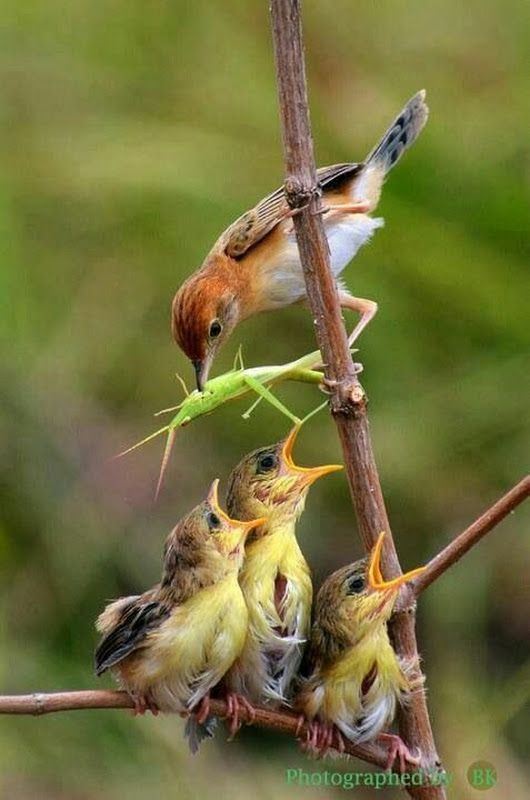 Numerous videos serve as excellent proof of this. However, experts do not recommend letting them into water bodies until they are 20 days old. If the chicks start swimming in cold water, they can catch a cold. Therefore, it is enough to put a container of water in the duckling.
Numerous videos serve as excellent proof of this. However, experts do not recommend letting them into water bodies until they are 20 days old. If the chicks start swimming in cold water, they can catch a cold. Therefore, it is enough to put a container of water in the duckling.
Feeding wild birds
Ducklings should be fed once every two hours until they are 5 days old. Boiled and chopped eggs mixed with millet or barley grain should be added to the diet. It is also recommended to include greens (nettle, dandelion, clover) in the diet without fail.
As shown by numerous videos, birds love to eat mash, which is based on fermented milk products. Fish oil can be included in such food.
A sample ration for a duck should look like this:
- Grain in ground form (20%).
- Wheat bran (10%).
- Various legumes (10%).
- Cake (7%).
- Half of the diet should consist of greens.
- The rest of the diet falls on chalk, salt, shells.

As soon as the duckling is one month old, it is recommended to feed it three times a day. Experts in numerous videos recommend including potato or carrot tops, food waste in the diet. A real delicacy is duckweed and other vegetation growing in open water.
What should birds not eat?
Do not add sour food to the diet of ducklings. This is bad for their digestion. Experts in numerous videos claim that it is not recommended to feed waterfowl with bread. The greatest danger is the black edge, which can cause fermentation processes in the gastrointestinal tract of the duckling.
Birds love to swim
Raising a wild duck at home means that it must be released into the water. It is recommended to do this after the age of the chick exceeds the three-week mark. At first, they should swim no more than 3 hours a day. As soon as four weeks old, you can allow ducklings to swim at least a day and a half.
It is necessary to teach the duckling to return home from the pond on its own.